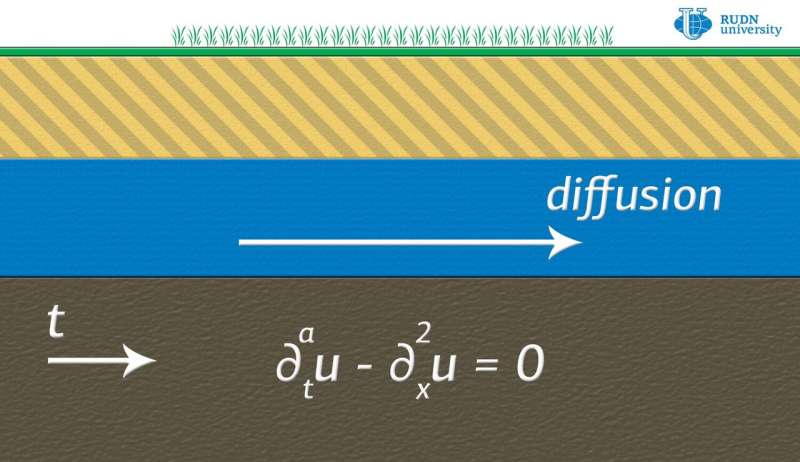Mathematicians prove a theorem that would help calculate the movement of water in porous rock

Mathematicians from RUDN University have proved the unique continuation theorem for a one-dimensional solution to a fractional order diffusion problem. Such equations are used, for example, to solve problems of the diffusion of particles in a porous medium like the seepage of groundwater. The results of the mathematicians' work could lead to a more accurate analysis of solutions and their numerical simulation. In the general case, there are no such continuation theorems for other classes of similar equations. The article was published in the journal Fractional Calculus and Applied Analysis.
The diffusion equation is a partial differential equation that describes the penetration of particles into a medium. Its solution is a function u of t and x, which gives the density of particles at point x at time t. The one-dimensional diffusion equation contains derivatives of u with respect to t, as well as derivatives of u with respect to x and a second derivative of u with respect to x.
The one-dimensional equation is also called the heat conduction equation: Heat propagation can be considered as a form of diffusion. In the one-dimensional fractional diffusion equation, the derivative of u with respect to t is replaced by the Caputo fractional derivative. If the derivative is the limit of a ratio, then the Caputo fractional derivative of a fractional order a is determined by integral formula, where for integer values a there are standard values of the derivatives. For the usual one-dimensional diffusion equation, a continuation theorem can be proven[s].[/s] It states that if the density and the flux of particles are zero at one boundary point over a time interval, then there is not diffusion in x and t under consideration. Even a first year student can understand the proof of this statement, however, until recently, similar results for the fractional diffusion equation were unknown.
RUDN University mathematician Masahiro Yamamoto and his colleagues considered the one-dimensional fractional diffusion equation for an arbitrary parameter a with a value between 0 and 1. They managed to demonstrate that in the fractional case there is also a continuation theorem, moreover, in the same formulation: if the density and the flux of particles are zero at one boundary point over a time interval, then nothing diffuses.
The idea of the proof is this: Mathematicians take a solution, look at how it behaves in a continuation, and then get an integral estimate for the increase of this solution, depending on the parameter. It follows from the integral estimate that the only satisfactory solution is the zero solution. There are no known similar estimates for similar equations with fractional derivatives.
The fractional diffusion equation is applied in various fields of physics, mathematics, and computer science. For example, this equation describes the diffusion of particles in a porous medium. Such equations have been successfully used to describe behavior of pollution emissions in groundwater. Another area of application of such equations is image processing.
More information: Zhiyuan Li et al. Unique continuation principle for the one-dimensional time-fractional diffusion equation, Fractional Calculus and Applied Analysis (2019). DOI: 10.1515/fca-2019-0036
Provided by RUDN University




















